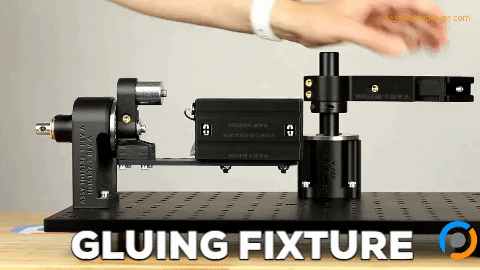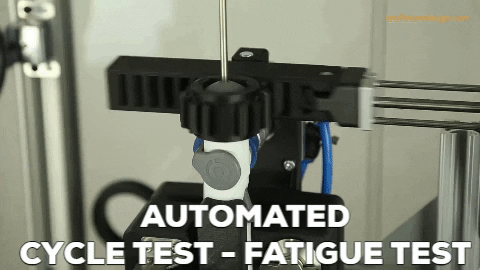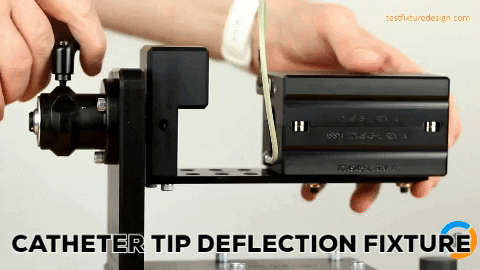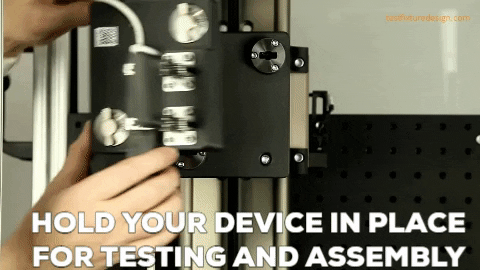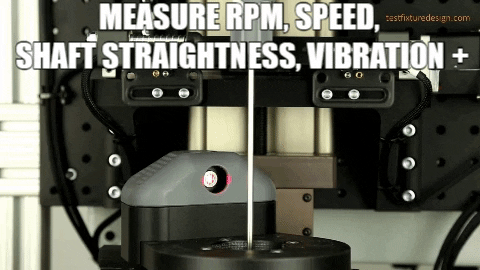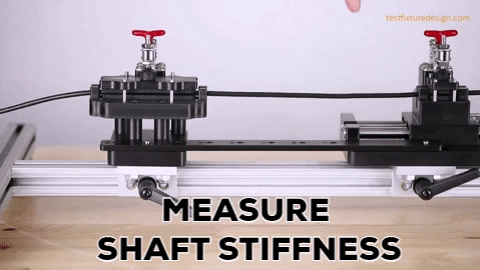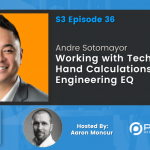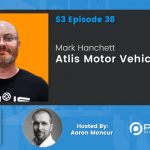Stan Bentley | Starting an Engineering Business, Day Care, & Powdercoating
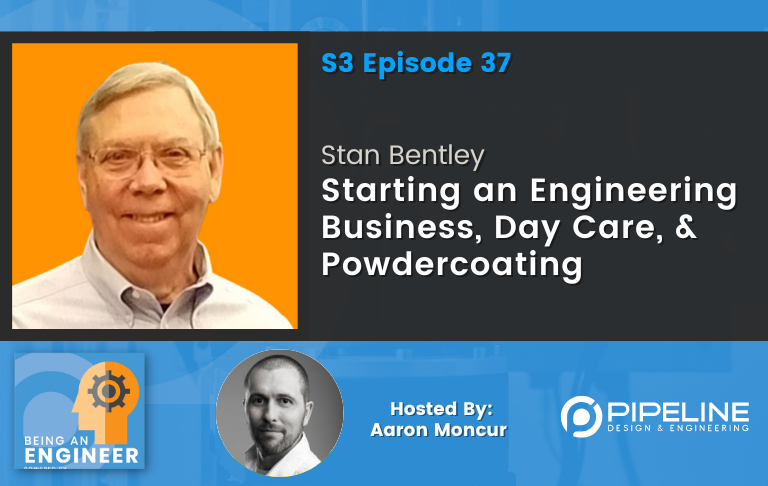
Who is Stan Bentley?
Stan Bentley‘s background includes a mix of Electronic Design and Manufacturing. He started Diversified Systems (’72) in his garage after graduating with a EE degree and grew it to nearly 700 people doing electronic Design, PCB Fabrication, and Assembly. In 2010 Stan started DIVSYS doing similar activities but without the heavy manufacturing and eventually sold that business in 2018. Recently Stan started his third company, DIVaero, focusing only on ITAR Electronics.
EXPAND TO VIEW EPISODE TRANSCRIPTION
SUMMARY KEYWORDS
pcbs, company, engineers, people, design, kinds, industry, problem, electronics, solder, parts, printed circuit boards, work, needed, stan, electrostatic, money, building, early, transistor radios
SPEAKERS
Presenter, Aaron Moncur, Stan Bentley
Presenter 00:00
Hi, everyone. We’ve set up this being an engineer podcast as an industry knowledge repository, if you will, we hope it’ll be a tool where engineers can learn about and connect with other companies, technologies, people, resources and opportunities. So make some connections and enjoy the show.
Stan Bentley 00:18
And she was cursed, most upset, and there was no place in this small town that you could get anything like that repaired fact they had no idea what they were. And so she made the statement, and she said, if someone could fix this, I give them the best kiss they’d ever had.
Aaron Moncur 00:37
Hello, and welcome to the being an engineer Podcast. Today we’re talking with Stan Bentley, whose background includes a mix of electronic design and manufacturing. Stan started diversified systems in his garage back in 1972. After graduating with a W degree and grit to nearly 700 people doing electronic design, PCB fabrication and assembly. In 2010. Stan started DIVSYS doing similar activities, but without the heavy manufacturing and eventually sold that business in 2018. Recently, Stan started his third company DIVaero. Hopefully, I’m pronouncing that correctly, focusing solely on ITAR electronics. Stan, welcome to the show. And thank you so much for joining me today.
Stan Bentley 01:39
Well, thank you for having me.
Aaron Moncur 01:41
All right. To get things started off, I’m going to throw you a softball question. What made you decide to become an engineer?
Stan Bentley 01:52
That may be less less of a softball, the I actually first got into electronics, and then decided that engineering was the way to pursue electronics. And that’s a funny shaggy dog story that I don’t often tell but they, I was in the seventh grade. And I grew up in a rural area of southeastern Kentucky and the coalfields, the Appalachian Mountains. And so as you can imagine, we were pretty isolated from about everything. And in that time period, the first transistor radios handheld transistor radios came out. So that’s how far back I go in this industry. And these early little handheld devices were crude poor am only. And it took a they didn’t even have a speaker that first would you actually use the little earphone earlier, but they and the I had just started to notice that girls were different. The what was the prettiest girl in our class in school, I think was also one of the wealthiest had, she got one of these transistor radios. And of course, we all knew it, who did odd about this thing. And so she was in a group one day with this passing the earphone around and it stopped working. And she was cursed, most upset. And there was no place in this small town that you could get anything like that repaired fact, they had no idea what they were. And so she made the statement. And she said, if someone could fix this, I give them the best kiss they’d ever.
Aaron Moncur 03:48
That was all the motivation you needed.
Stan Bentley 03:51
No clue how this thing worked or anything else. But I thought this is something I have to drive around and said, I’ll fix it.
Aaron Moncur 04:06
And how did that turn out?
Stan Bentley 04:09
It actually worked. I took this thing home. And they turned out that I didn’t even know this. My father was an electronics instructor was an officer in the Navy. And consequently in our base, there were some things he had brought back one of which was a soldering iron. And he gave me a quick crash course in this this thing. So I was I started trying to take this radio apart I discovered that the A would actually that the earphone the plug piece had a poor solder joint and it come loose and that if I touch that wire back to the solder connection, the thing played and so I learned very quickly how to solder did what was probably today an incredibly crude, crude job of soldering that screwed it all back together it all played. So I took it back and true to her word. I handed her the radio and I got my my first real kiss.
Aaron Moncur 05:12
That’s a wonderful story. Thank you for sharing that. Well, you started your career as a designer and eventually moved into manufacturing what what motivated you to make that change?
Stan Bentley 05:25
Well, actually, it really started in college, the I was in graduate school, the program that I was part of was really funded through a NASA grant that ultimately routed to us. And in that we were building a remotely piloted vehicle, which was kind of interesting. And it was really intended for sending into hazardous environments, particularly since this was Kentucky, coal mining accidents. And as part of that design effort, we needed printed circuit boards, and there would go back to the 19 6970 timeframe, there was no way to buy those. And so basically, I had to figure out how to crudely make PCBs and kitty litter pans, so that we could create the designs or implement the designs we were working on. So I carried that forward. When I left school as a design engineer, had the same problem again, I needed PCBs, and couldn’t buy onesie twosie. And so I created another small lab, making little more sophisticated ones, because we had a little more money, and very quickly decided that would be a business. And so I formed a company in 72, to design microprocessor based things and make crude PCBs.
Aaron Moncur 06:54
Now, the company you were working at before you started your own business, was that Randsburg?
Stan Bentley 07:00
That’s correct. They are Randsburg is an interesting company, that name is still around the company and what they did lives on. They the person who started that company was a gentleman by the name of Harold Greensburg, and who’s kind of a unique sort of inventor even though he did not have a technical background. And what he did was he invented the electrostatic painting process. And by which everything today is painted or powder coated, powder coating, yeah, okay. And so that process came out of this company also. Amazing. So that was really what was an interesting story. I was really hired out of graduate school, I had no intention of I thought I would stay to become a professor because the life on the college campus for a young guys not too shabby. But this company, since they had invented the process, at the same time, the EPA was created in this seven days, and one of the very first industries they they went after was the really the automobile industry, but more specifically painting. Because anyone that was around in that era, and that lived, for example, let’s say in Detroit, you literally could walk across the Detroit River. The paint film on it was unbelievable, in fact that the river in Cleveland, Ohio, caught fire and burned. And so the EPA was looked was looking at the painting industry, because they were just the bottle tool was just going up the stacks into the air and the overspray was just being dumped. I know that today that seems like an impossible thing. But this was the situation and in 19 6970 timeframe. And so consequently, a hand spray operation for anyone that’s ever used a spray can and you know that most of it goes everywhere, but where you aimed it. And that’s pretty much the that was the case with the painting industry. So for example, an automobile, that vintage had roughly a gallon of fit of paint on it when they left the factory, but they sprayed five to get one on there. That’s staggering. Unbelievable. The transfer efficiencies were in the 25% range. And so consequently, you can see why they were producing in this was the heyday of the auto industry, about one car a minute came off of those lines. So it doesn’t take too much like too much. Math says look, if you go to Ford, GM, Chrysler and so on, you get a lot of paint film. Well, the the crudest electrostatic process would generate almost 90% Or a little better than 90% trends. We’re efficiency, we later huge, huge, we got those numbers up to 95, or 96. But the problem was, they did this by charging the paint to 100,000 volts DC. And so if if you’ve ever had, most people haven’t had an electrostatic Spark, you’ve got essentially a charged atomizing device, that’s at 100,000 volts and you have a grounded metal object. You don’t have to get too close before you draw a lightning bolt. And if you do that in a carburized mixture of solvent and air, you get a fire. So one hand we could solve the EPA problem, but on the other, we could burn a factory. And so that was essentially the the challenge that I was given. And that’s what drew me out of graduate school, instead of being a professor was figuring out how to make one of these things safe.
Aaron Moncur 10:56
Interesting, well, fun project for your first real project out of school
Stan Bentley 11:01
big, I had no clue how to do it.
Aaron Moncur 11:05
Well, I think this, what I read on your LinkedIn pages talking about this very time, you said that having unlimited resources, and being surrounded by incredibly talented and motivated people, is something few engineers ever experience, yet you did experience and that it built the foundation for all of your engineering accomplishments for the next 40 years. Can you talk a little bit about about that time and you share, you know, what you were able to learn and accomplish with unlimited resources and talented motivated people.
Stan Bentley 11:41
But both of those are a blessing that few engineers really get, particularly to have both. And at that age, especially your age, correct. And the this was really the result of trying to solve the problem of how to make electrostatic systems safe. And so the company was sitting here faced with an opportunity that was just unbelievable, if they could solve this, this problem. And they were very cash rich, even though they were small, they were a cash rich company, because they had made very good margins on the things they did. And so consequently, they really had a very short period to solve it. And essentially, it said, Just spend whatever you need to spend and hire whomever you need to hire. And so that allowed me to relate to hire the cream of the crop of the young tech talent. And I did the same thing. So it’s no one knew how to do this. There was no reason to go look for experience, I looked for smarts. And we had the cash to experiment with this to brainstorm the ideas. And with that, it really taught me a whole batch of things. One, I got to dabble in a lot of different industries, which again, sadly, a lot of engineers don’t, we seem to get pigeonholed. And we spend all of our career doing something that’s a mile deep and an inch wide. And in this particular case, I had the opportunity to look across a lot of disciplines, and to work with smart people in all of those disciplines. And so we did in a period of about two years, we solved the problem, we came up with systems that worked. And basically the entire painting industry adopted this technology globally. And so that was to me was was just an incredible opportunity. And with that that’s what I leverage then for the next 40 years of my career was the the lesson learned was surround yourself with the smartest people you can find no ideas, a bad idea. And sometimes the most off the wall things are the things that really can develop into world class products.
Aaron Moncur 14:06
I can get a sense of how seeing that actually work would give you an incredible amount of confidence that maybe you wouldn’t have otherwise. I remember working on a project several years back and it was with an inventor. And he was not an engineer, but he was a bright guy. And we had tried a variety of different things. Two, it was a very mechanical solution here. And none of them had really worked and he came up with this idea that was just so far out there. And I thought there’s no way that’s going to work. This is crazy. You know, I’m the engineer here this is not going to work. What are we wasting our time on this for? And lo and behold, it worked. It was the one that worked you know, it was just this out there crazy idea. And and it worked and and that was just you know a relatively small thing here you are one of the pioneers of powder coating for Good grief. You know A major manufacturing process that’s used by WHO KNOWS hundreds of 1000s Millions of processes to this date and having a success like that I’m sure you were able to ride on that experience for Well, like you said, the next 40 years of your career?
Stan Bentley 15:17
That’s correct. I, the irony of it was that I really didn’t stay in that industry. Once I formed my own company, then it was really just a variety of industries. Because what we specialized in was people would walk in with a problem, yes, we made stuff, we made printed circuit boards, we, we put parts on boards, we created product, but what we really specialized in was bringing in something that wasn’t working quite correctly or didn’t work at all. And figuring out how to either in some cases, just manufacture it in other cases, fix it such that it did the perform the application that the inventor if you will intended. So we weren’t really coming up with these creative ideas as much as we were helping someone win that spark, figure out how to implement it, and make the whole thing work. And that is really to me, what has been the fun of an entire career is that you don’t know where the next application is coming from. It could be any field you can imagine.
Aaron Moncur 16:25
Yeah. Oh, how great just solving fun, hard problems. I mean, is there anything better for an engineer to do? That’s really why we’re here?
Stan Bentley 16:33
I don’t think so. All right. Well, every day.
Aaron Moncur 16:39
Absolutely. Yep. You started your first company, diversified Systems, Inc, in your garage, and eventually grew to nearly 700 people what walked us through that journey? What How did that happen?
Stan Bentley 16:54
Well, the I for really, for some time, I wanted to actually start a company, even as far back as the college days. And so I by total chance, met a an individual in a bar. And he was the term that was the chief engineer of a company. And this company made, they invented, I believe I’m correct in this. I know, they made the very first ones. And I think they came up with the idea, the first dollar bill changers. And so he’s sitting in basically his, they created this, they put them out on the market. And the problem was, and the reason he was in the bar drinking was that someone had discovered with these early dollar bill changers, if they folded the dollar bill in half and toric, they could feed both halves into the machine and get $2 and change. And this was before the internet, of course, by a long shot, but it’s amazing, just how well the communication channels were.
Aaron Moncur 18:12
I believe it.
Stan Bentley 18:14
And so consequently, what he was looking for was someone to solve that problem very quickly, and make lots and lots of these because they had 1000s of these things. had been I’m assuming 1000s I know we made 1000s of the fix. And so that’s what I said, Well, I think we can figure this out. And so that’s literally what we did in the garage was designed a very simple little circuit to fix this, and then made a whole batch of that we needed to make the circuit boards. So I lined up a batch of much as I’ve done in college, I can’t let her pants because the very first polyol of our polyethylene containers had come out Rubbermaid had just hit the market. And polyethylene works out to be a fantastic thing for chemicals. So the cheapest polyethylene tanks I could buy were at the pet store. And so I gave you a letter payments, and basically set up a line to make the PCBs and then on a workbench in my garage, I think corral neighborhood help and my wife and so on, and we taught them how to solder and we soldered these and we made 1000s of them and ship them to actually hand delivered them to this company. And they installed these everywhere into their dollar bill machines to so that you $1 gave you $1 change.
Aaron Moncur 19:44
That’s awesome. And how old were you at this point? 2424 That must have been so fun. I mean just working out of your garage and you don’t have a big staff right your is you and your wife and whoever from the neighborhood you can pull in and just make this happen. What a great time that must have been.
Stan Bentley 20:02
It was a whole lot of fun. And so then we received just word of mouth for extra, because we knew nothing about marketing sales or any of these kinds of things. But there were, it turns out a lot of companies that had need of something like that either PCBs or assembly. And so very quickly, we needed to, we needed more space. And so we rented a small space and a an office warehouse complex. But we also needed equipment. And being very, very new in the career and not coming from wealth. There was, there was no financing. And so we needed money to buy the stuff. And so we had a cute little, kind of little off, it was 1200 square feet, so it’s tiny. And so I started, I said, Well, you need money, you go to banks, I thought, I didn’t know that investors and venture capital and all of these things that you learned later in life. So I started going to banks, and with this idea of I needed to borrow money. And it wasn’t a huge amount, but it was maybe two or $300,000, which in 1973, four timeframe was was a lot of money. And so I went to the major banks in town, and was unceremoniously thrown out of every one of them. Not even nicely. And so I actually went into a small town bank, and I walked in, and um, you know, I’ve gotten the big banks are not going to work. And as I walked in, off to my left, I saw an office with a guy sitting there and know that the placard on the door, said, President, so I said, Well, if I go to the receptionist and asked to see him, I know how that works. So I just walked straight in his office and sat down, said Hi there. And Tony, what I wanted to do. And he said, Well, I’ll tell you what he said. We’re, I’m intrigued about the possibility of maybe investing in a small company. Why don’t I bring some of our board members and so on, and come see your little company? Well, that’s a great idea, except there wasn’t much to see
Aaron Moncur 22:31
the garage.
Stan Bentley 22:33
Well, we, yes, everything was in the garage, we had this this little this nice space. So I go back and think about this. How do we do a tour fortunately, it was going to be a week or so before they come. So what I did, I went to all of the neighbors, whose wives and other folks had been kind of coming in and helping solder stuff. And we borrowed all kinds of things from work tables, work benches, we borrowed curtains, we borrowed chairs, and decorate this space. So it had a little entry office area with a little tiny desk. And then it opened into this. Well, that would be about 1000 square foot, kind of just block wall factory. And we set all of that up with workbenches. And then we took a set of parts because I didn’t have enough parts that we could actually show a line running and we have no employees. So on the day that the tour was supposed to happen, then the ladies of the neighborhood, I don’t remember now how many it seems like there was a lot but it probably was maybe six or eight. They got there early, and we set up an assembly line. And so what we would do, since we only had one set of parts, these were through hole in that that era. So they would one group was sitting there, they would put the parts in the PCBs and then they would pass them and each person would add parts and so on. They get to an inspector at the end of the line when we didn’t solder them. So the person at the end of the line then was taking the parts back out and putting them in advance to the front of out of my world basically this little factory,
Aaron Moncur 24:30
and they bought it they had no idea.
Stan Bentley 24:34
I don’t even remember how much but I think around $100,000 Just on a signature and no personal guarantees none of the stuff that I learned a whole lot about later in life. And so we then bought the equipment we actually needed that on a more efficient basis make PCBs and to assemble this amazing I just kind of built from there.
Aaron Moncur 25:03
What a fantastic story. Wow, that’s one of the better ones that I’ve heard. Well, let’s see, this is probably a good good time to take a short pause and share with the listeners that Team pipeline.us is where you can learn more about how we help medical device and other product engineering or manufacturing teams develop turnkey equipment, custom fixtures and automated machines to characterize, inspect, assemble, manufacture, and perform verification testing on your devices. And we’re speaking with Stan Bentley today who just has some really wonderful stories. Going back to DSI diversified systems, you had written a little bit about the culture there and back in that day, correct me if I’m wrong, but culture at a company was not the buzzword that it is today. Yet, it seems that you were very proud of the culture that you develop there. You talked about a child daycare with kindergarten, a variety of educational courses, a 25 acre beautiful campus, a Wellness Center, and more. What What effect did that culture have on the daily lives of the people who work there?
Stan Bentley 26:14
Well, it’s, you know, when you look back on all of those things, and of course, today, this is very much in vogue. But if you look back on it, I’d like to say that this was a brilliant strategy that we thought out. But the reality was, these were things that happened kind of incrementally that worked very well, and all of a sudden became well, gee, that’s obvious, why wouldn’t you do this, but they start with the the campus itself, we we grew very quickly during the 80s. And we made very, very good money because we could make printed circuit boards that plated through hole of multilayer when very, very few shops in the USA, other than huge mega shops could do so. So we actually, which is one of the interesting stories that building a 25 acre campus, actually was the building where I first started to work for Rensburg corporation. So in the the early 90s, I actually purchased the facility and the land from the company where I really started to work. And we spent a year renovating that, that building, and we just gutted it and put everything back back new. But then when we get to the late 90s, as the company is really, really growing very rapidly, people became a product, very much like the situation exactly the situation today, where you literally cannot get the people that you need, particularly if you’re looking at these early employment, early young professionals and so on. And my wife actually came to me. And she said, you know, you’re trying to hire these folks. There’s all kinds of reasons why, you know, they can’t come to work and so on. And what you want are these young professionals, she said, if we would create a daycare, then you would be able to pull out of pull into the market people that for various childcare reasons, can’t come into the market. And so I thought, let’s give this a try. And it turns out the building happened to have about a 12,000 square foot executive office complex attached to it through a breezeway that we never occupied because the offices were to swipe. As I told all of my managers who all coveted one of these because they all had private bathrooms. I said, you know, if customers come to see us, and we’re in these kinds of digs, first thing they’re going to assume is they’re paying us too much. So we never occupied this. And so we went in and just renovated this space, which wasn’t difficult, because it was a series of large offices, and had a huge open area in the middle. And we just took out the adult toilets and put in kids toilets, types of things. And we then struck a deal actually with Easterseals to manage this facility for us because we knew nothing about managing a daycare. There’s all kinds of permits and and some horror stories going around there was again, people of that era would remember there was like I think it was the Mary Martin preschool where they had all kinds of child abuse things that happen. Allegedly, I’m not sure how I will that came out. But anyway, what we did is we we’ve struck a deal with Easterseals to manage this facility and hire the staff and and it filled up instantly. It held 126 kids in a stateful. And we took them all the way from basically newborns through and it could do kit was a teaching facility, so it could do the kindergarten, so they were ready for them to go on to school. And with that, suddenly, we were just blessed with just a flood of these young educated professionals, men and women, who were for various reasons struggling with childcare. And so now they had it on site. And we had our just pick of whomever we wished. And it just the company grew like crazy with all of this smart, you know, talent just I can’t even describe it. Plus, it made you feel good. One cute story in that one of the, the older ladies in the factory on the assembly area, it came to me one day. And I’ll tell you a second story about her. But it was interesting. And she said, Hey, would it be okay? And she said, there’s a lot of us that are, you know, for kids are grown, we’re either getting grandkids, or we have no grandkids or whatever? Would it be okay, if if we went up some time and maybe sat down and read a story to the kids,
Aaron Moncur 31:19
oh,
Stan Bentley 31:22
I can’t really see how that could be a problem. So that we had this large open area in the center. So we purchased rocking chairs, and we put in that open area. And that immediately this became a hit. And it was just men and women. In fact, I go up sometimes he’s just sitting on the floor and but these, these ladies would go up and sit in the rocking chair. And they started to call it a rocker baby program. So they will just assess the staff with with the kids. And of course, you know, the moms and dads could go have lunch with him or go see him whenever. And this thing just worked. It was just a tremendous employee benefit. And other things then grew out of that that we talked about. We put in a cafeteria. And so with the actual chef and the because we eventually we were running three shifts. So we really were only closed Sunday mornings, until really about one to 1pm. And so fast food and so on starts to get old, really pretty quick. And it’s availability on the off hours as well, the places that are open those hours usually sort of stuff that at least I associate with three in the morning when the bar closed,
Aaron Moncur 32:48
right, yeah.
Stan Bentley 32:51
So they that that became a huge benefit. The cafeteria actually started to package meals that people could order just at their desk, and then they could go pick up these packaged meals and take home with them for the family. And so that turned into a huge benefit. Then my wife came to me with another idea. prior life she was a nurse before we turned her into a production person and running purchasing. But she retired briefly because we now had enough folks that she didn’t need to do these things. And she said what we need is a is a wellness program because you’re feeding them to well. So we actually first put in a wellness center with a really nice like Nautilus kind of equipment and so on. So we had all of the treadmills and ellipticals and and these kinds of things, then we follow that very quickly by opening a nurse’s office that she ran and where we then could do routine kinds of things for the employee blood pressure, blood pressure checks and cholesterol and someone is ill do you really need to go see a doctor you know dispensing nomads or anything like this just doing really very routine care. And that turned into then something that was a huge Employee Benefit also.
Aaron Moncur 34:25
You guys were like Google before Google existed. I mean, you just had this huge campus this ecosystem of all these perks and benefits it sounds incredible. Was that very rare back then or were there a lot of companies doing these sorts of things AI or anything like that?
Stan Bentley 34:42
It was pretty rare. I’m I am not I’m not aware. I’m sure other people did. Or certainly did pieces of that. I don’t know of anyone in our geographic area. Yeah, that had all of those. Today care particularly that Was that one was perhaps the most unique of all of them. But it’s great to know. And you know, and it really because we had the space and we were fortunate in striking a deal with professionals to run this, that it was just an incredible employee benefit. And we allowed the neighborhood to use it also because we didn’t fill up 126 kids, but by allowing the neighborhood to fill the open spots and always stay full. Well, of course, they made an incredible space outside we set up play yard for each age group, because we had it was like a campus out their own their own play yard.
Aaron Moncur 35:42
Yeah. Wow, what a fun mix of professional and play.
Stan Bentley 35:48
Yes, there was one, one quick story on the lady that came to me about the rocket before it was rocket baby. This lady now currently, I’m the North American technical director, also, at least for the next year, ICAPE corporation to whom we sold the divsys operation, and then opened the military group. But so we have in this facility assembly and and essentially PCB sales. Well, people are a big problem. But a lady called me, oh, maybe four or five months ago. And she said, Hey, I’ve retired and I work for you for a lot of years. And I need something to do because I’m going crazy. Well, that’s cool is you know, I mean, if your eyesight is still good, and your hand eye coordination is good. So she came in for an interview. And we hired her. Well, this lady about a month ago had her 87th birthday
Aaron Moncur 36:53
at seven. Oh my goodness.
Stan Bentley 36:56
And I just think no one wants your
Aaron Moncur 37:00
money. Oh, yeah.
Stan Bentley 37:01
Wow. Seven saying I am bored. Goodness,
Aaron Moncur 37:06
I hope I can use the bathroom myself and 87 Much less PCB.
Stan Bentley 37:12
Yeah, imagine doing some more. eye sight is good, or poor. it’s just amazing.
Aaron Moncur 37:19
That’s a good stock there. Wow. Well, I’m gonna bring this back towards the technical end of things for for this last one or two questions. What are some of the biggest challenges implementing electronic designs into products?
Stan Bentley 37:37
There’s a while. Number one is I think Mac I was blessed in my early career, that in the USA, really the PCB industry pretty much was created here. And so we could design products. And we could either make the PCBs ourselves are with a very short travel distance, don’t see them being made. The same was true on putting the parts on the boards and assembling. So consequently, as design engineers, we had the benefit of seeing how the product was, was being made. And working very closely with the engineers that were doing those particular processes, which helped us to create really, really good designs, very manufacturable designs, however, now is the protector, the USA, the PCB industry is virtually gone from here. And to a large extent, the assembly of those boards as well, I won’t mention assembly is making a healthy return. But if we take the situation as of today, so if you’re a young design engineer, you’re not one of the old salts that had this benefit. You’re coming out of school, you’ve got all these computer skills, you know how to run simulations, you know how to do all of these things, that you don’t know how to make anything. And so you’re creating designs in a vacuum based upon what you see on a tube and algorithms that someone wrote for you, and parts that were made and stored in the library and so on. And as a consequence of that, your first design probably ain’t gonna work. And if it does, it’s probably not going to be something that’s cost effective to manufacture. And so I think one of the biggest hurdles today is how to bridge this gap. Because we got all of these bright young engineers coming out, they’ve got these phenomenal skills. They have these creative ideas, but eventually you have to make stuff. And unless you want to be if it’s just software. And so that’s what I see is that the benefit that myself and my generation had as engineers, these these younger engineers don’t have that. And we have to figure out How to give them that experience back. And that’s really a lot of what I’m trying to do and the company that that I work for now. But I think everybody’s struggling with this because my day all day, every day today is spent talking to people about how do you how do you make this? How do you turn this into something real? And that I think if we can fix that problem, it’s going to be pretty phenomenal. But all of these creative kids can do.
Aaron Moncur 40:30
Yeah. Amen to that. Kids. Yeah. Okay. Well, Stan, this has been really a delight speaking with you. Thank you again for for sharing some of your time today. How can people get in touch with you?
Stan Bentley 40:44
Well, very easy. One, I do have a LinkedIn page. And I will confess that I don’t go there often. But if they send an email through that, I get it. But also my email is pretty simple. It is Stan stan dot Bentley spell Be en t le y. And then that is at Dave arrow, which is spelled di vaero.com. And I respond to I get lots of emails every day and I try to respond to every single one of them,
Aaron Moncur 41:21
as evidenced by the 87 year old woman who’s now working for you again.
Stan Bentley 41:27
I think it’s a great human interest story. I hope all of us can make it that far.
Aaron Moncur 41:32
Oh, absolutely. Yeah. All right, Stan. Well, again, thank you so much. I really appreciate you talking with me today.
Stan Bentley 41:40
You’re very welcome. I’ve enjoyed it.
Aaron Moncur 41:45
I’m Aaron Moncur, founder of pipeline design, and engineering. If you liked what you heard today, please share the episode. To learn how your team can leverage our team’s expertise developing turnkey equipment, custom fixtures and automated machines and with product design, visit us at Team pipeline.us Thanks for listening
We hope you enjoyed this episode of the Being an Engineer Podcast.
Help us rank as the #1 engineering podcast on Apple and Spotify by leaving a review for us.
You can find us under the category: mechanical engineering podcast on Apple Podcasts.
Being an Engineer podcast is a go-to resource and podcast for engineering students on Spotify, too.
Aaron Moncur and Rafael Testai love hearing from their listeners, so feel free to email us, connect on Facebook, Twitter, Instagram, and subscribe on Apple Podcast and Spotify!
About Being An Engineer
The Being An Engineer podcast is a repository for industry knowledge and a tool through which engineers learn about and connect with relevant companies, technologies, people resources, and opportunities. We feature successful mechanical engineers and interview engineers who are passionate about their work and who made a great impact on the engineering community.
The Being An Engineer podcast is brought to you by Pipeline Design & Engineering. Pipeline partners with medical & other device engineering teams who need turnkey equipment such as cycle test machines, custom test fixtures, automation equipment, assembly jigs, inspection stations and more. You can find us on the web at www.teampipeline.us
You’ve read this far! Therefore, it’s time to turn your headphones up and listen now to this episode to learn all these. Don’t forget to tell your friends who might like this too!





